I’ll admit that I’ve always been a big fan of fake plants.
I love how they can add the look and feel of greenery to homes and also eases the hassle of keeping them in good health.
But I’ve noticed that whenever I have an actual living plant in my home there’s something special about it that fake plants won’t be able to give me the sensation of living.
I believe that a large one of the reasons I’ve always relied on fake plants to add greenery to my living space is that I’ve never felt that I’ve been able to ensure that my house plants are healthy!
The most significant reason behind this battle? Our house isn’t equipped with lots of sunlight…
The living room is a tiny space with the one glass window (which can be described as the sliding glass doors to the backyard) There is a small window just above the sink, while the dining room only has one large window that faces towards the rear of the home. This is it!
In our living space , there is only just a little bit of sunlight coming through a couple of windows.
If you’re anything like me, and looking for live, real plants for your space with limited light this post going to open your eyes to possibilities!
There are a myriad of possibilities to purchase an indoor plant that can tolerate low light, and I’m thrilled to share a few with you.
Although these plants don’t require direct sunlight for survival but they do require indirect light (which can come from even the most tiny or most obscure windows.)
In actual fact, many of these plants can be damaged in direct sunlight. So make certain to put them in an area in a place that’s not too close to windows that receive bright light.
I hope you’ll pick one or two of them and feel the joy that they bring to your space!
1. Bromeliad (Bromeliaceae)
Bromeliads are tropical plant, which usually show with vibrant hues. Their distinctive look and tropical vibe make them an ideal choice for a houseplant. Bromeliads appear best on tables, shelves and even in the ground according to the species.
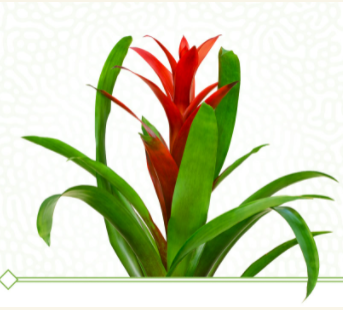
The majority of bromeliad species like direct sunlight that is bright in contrast to direct light. Indirect light indicates that the sun isn’t direct hitting your plant. Direct light would be if the plant was outside directly in the sun or you put your plant near an open window that has sunlight shining direct onto it. Long exposure to the sunlight can harm a bromeliad’s leaves. It is recommended to keep it close but not close to, or directly in front of windows. Bromeliads can also thrive in fluorescent light if there is no natural light.
2. Chinese Evergreen (Aglaonema)
Chinese evergreen plants are simple to cultivate and are one of the indoor plants that do not require sunlight. A lot of people believe they are a good plant to get started when you’re just beginning to care for your home plants. The older Chinese evergreens produce flowers that resemble calla lilies. They look good in a bare floor, near furniture or space in your home. Younger Chinese evergreens are small enough to fit on a desk, tabletop and shelves. They also made it to NASA’s list for air-filtering houseplants So Chinese evergreens are easy to maintain and are healthy options in your living space!
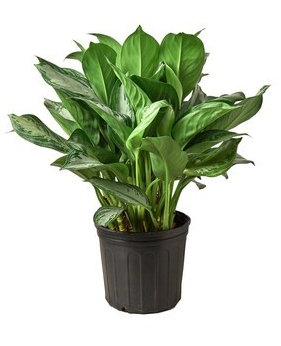
The Chinese evergreen’s particular sun requirements are determined by the color the leaves. If you’ve got a plant with darker leaves, that particular plant will prefer low light. Varieties with lighter-colored leaves , such as orange or pink, are suited to medium light. As with other plants in this list, Chinese evergreen should not be planted in direct sunlight to avoid burning leaves.
3. Cast Iron Plant (Aspidistra elatior)
The plant that produces cast iron is often called the iron plant due to its robust nature. It is able to withstand a variety of situations, which makes it an excellent option for those with black thumbs or busy gardeners. The rich green leaves of this plant make it ideal for accenting the rooms with a natural feel.
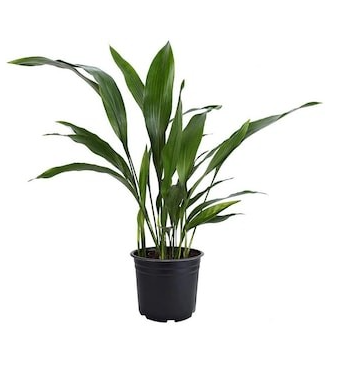
Cast irons are a low-light plant that can thrive almost everywhere within your home. They’re slow to grow and are extremely hard to eradicate. It is only necessary to be sure to keep them out of the sun’s rays to prevent their leaves from becoming scorched or becoming brown. If you’re looking for your iron garden to receive extra attention, clean its leaves every week using a moist cloth to remove dust. Clean leaves let it more easily absorb the sun’s rays and all its nutrients.
4. Dracaena (Dracaena)
The dracaena is a popular houseplant that is easy to maintain within your home. It comes in numerous varieties and looks fantastic on tables, shelves as well as for floor decoration. The more hefty varieties, such as those of dracaena massangeana, sport the appearance of a tree and can be used as flooring decorations.

Dracaenas thrive in indirect, bright light, but they are able to thrive in light that is low or medium in the event of need. Dracaenas is also one of the best air purifying plants that are able to remove the harmful substances within your home. Check out our Dracaena’s guide to care for more detailed information on caring for your Dracaena.
5. Dumb Cane (Dieffenbachia)
Dumb canes are stunning plants that are often used to decorate homes as well as workplaces. They are referred to as dumb canes due to the fact that all components of this plant can be toxic. This plant must be kept out of reach of children and pets. It may create swelling or other health issues when consumed, and may cause itching when its sap gets into the skin. If handled correctly and by avoiding contact, this plant’s threat is diminished.
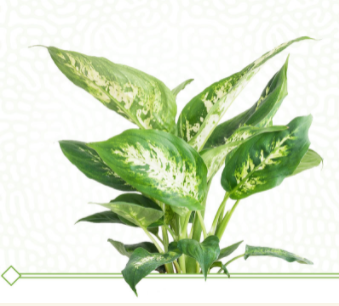
Dumb canes thrive between the filters of high and low according to the species. Filtered light refers to light that is reflected through something such as a sheer curtain or windows. Many species can thrive in low light levels, however, they may not expand based on the type of light. Make sure you know what species your cane is and check the kind of light it likes.
6. English Ivy (Hedera helix)
English Ivy is a beautiful climber plants that can transform any dull wall into a stunning artwork. Ivy can also be used for fences, trellises and other locations which allow the vines to expand. But, remember that it takes some time to develop when you’re starting from seeds.
English Ivy prefers direct light that is bright, but will tolerate low light. The more sunlight this ivy receives the better hue will shine in its foliage. But direct light could cause its death. Other ivy varieties such as the ones below perform well in shaded and indirect lighting.
7. Maidenhair Fern (Adiantum )
Maidenhair ferns are beautiful plants which can make any room look more elegant however, they can be difficult to destroy! The stunning leaves and overall appearance of this plant are enough to warrant the extra effort. There are a variety of ferns that, like the Boston fern as well as the bird’s-nest fern, thrive in indirect light.
Maidenhair ferns love bright, indirect light and can easily be susceptible to direct sun. They also like humid conditions and do not prefer dry soil, which is why they need to be moist however, they should not be overly-watered in order to avoid root decay. They also prefer the use of distilled water instead of hard water (a.k.a. water that typically comes from the basin).
8. Parlor Palm (Chamaedorea elegans)
Parlor palms are lush and beautiful plants which are perfect for your dining area and living space. The possession of a parlor palm during the Victorian period was a sign of the wealth of a family. While not as exclusive as it is in our modern world Parlor palms still adds a classy look to the space it’s in.
Parlor palms are able to grow in dim light, but they do best in moderate light. They also prefer shaded places instead of bright ones which means you don’t need to be concerned about keeping them close to the window. Parlor palms can also flourish in artificial lighting when needed.
9. Peace Lily ( Spathiphyllum )
Contrary to what many believe the peace lily isn’t a real flower in any way. Its”white “petal” is actually a bract of a leaf that grows in the vicinity of the bright yellow flowers. You should take a closer look next time you come across one! Peace lilies are a common flower that can range from 24 and 40 inches, therefore they are often utilized as floor decorations.
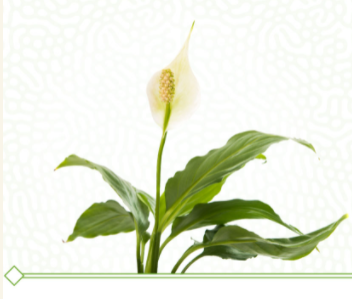
Peace lilies thrive in moderate to low light levels and also thrive under fluorescent light. The more light peace lilies are exposed to more, the more likely they are to bloom white flowers. They are able to thrive in places that receive less light, however they are less likely to bloom. The peace lily is among the most effective plants to cleanse and purify the air. Check out the peace lily care guidelines for more detailed details about how to care for your peace lily.
10. Peacock Plant (Calathea makoyana)
The peacock plant has been referred to by many names, including Cathedral windows, rattlesnake plants or the zebra plant. The names are derived from the beautiful foliage which may be compared to the beauty of feathered peacock. Peacock plants are famous as being extremely flamboyant and also for being meticulous in their maintenance. They like humid temperatures, distillation or rainwater, as well as damp (but not wet) soil.
Peacock plants like moderate to light conditions and are prone to having sad leaves when they are exposed to an excessive amount of direct sunlight. Leaves with light-colored markings can indicate too much sunlight to this species. If you are looking for a plant to grow it is recommended to select an established species and avoid plants that have brown leaves. It is more likely to succeed in growing a healthy peacock when you begin with a healthy peacock.
11. Peperomia (Peperomia)
Peperomia are small plants that make an attractive green accent on your table or desk. There are more than 1,000 varieties of peperomias that are found mostly throughout South as well as Central America. They prefer dry soils and can endure the rigors of a few days without irrigation due to their large leaves. They come in different colors such as red, gray and cream. They also come in green.
They prefer brightindirect light, and are still thriving under fluorescent light. Peperomias are also able to thrive in shaded areas, in the event of need. Avoid direct light to avoid burned leaves.
12. Philodendron (Philodendron)
Philodendrons are most famous for their vibrant foliage and distinctive look. The heartleaf variety is a tough plant that is able to withstand all situations with only minimal maintenance even in the low lighting. Philodendrons are available in non-climbing and climbing varieties. They can grow to as high as three feet and as wide as 6 feet when properly cared for.
The majority of species of philodendrons like direct, bright light. They can thrive even in shade. Be cautious when your philodendron starts to grow long and thin stems, with gaps that are long between leaves. This could indicate that your philodendron isn’t receiving enough light and needs to be relocated to a brighter spot. Check out our Philodendron care guide to find out more comprehensive details about how to care for your Philodendron.
13. Pothos (Epipremnum aureum)
Pothos plants are fantastic as starting plants for those who are just beginning their plant care journey. They can produce gorgeous, long vines, which are ideal to add interest to walls and create the impression of a tropical space. This is why they’re great in pots or hanging on desks.
Pothos plants like medium indoor lighting, but they can thrive in dim light. Insufficient light from the sun can cause their leaves to turn yellow, and a lack of light will cause their beautiful leaves to become pale. Check out our Pothos care guide to find out more comprehensive information on caring to your pothos.
14. Prayer Plant (Maranta leuconeura)
As night falls the leaves of the prayer plant fold in a way that resembles hands, ready to pray. The plant is known for its oval leaves and pink veins. Prayer plants look gorgeous in hanging baskets due to their distinctive leaves.
Prayer plants love direct, bright light however, they can be tolerant of low light. If it does not receive enough sunlight during the day, its leaves will turn brown at night and never reopen. The leaves of this plant will start to fade when it doesn’t get enough sunlight. It likes dry soil with high humidity.
15. Snake Plant (Sansevieria trifasciata)
The snake plant is also referred to as the mother’s tongue. It’s believed that this name stems from the leaves’ sharp point. Its stripes earned it its nickname as it is a “snake” plant because it is a little bit like the skin of a snake. They’re incredibly tall and tough enough to stand up to the most inconsiderate plant owner. Snake plants will maintain their tough appearance even after only a couple of weeks of carelessness.
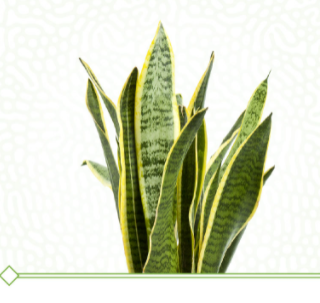
Snake plants can withstand many different lighting conditions, but they tend to prefer light that is indirect. They are susceptible to rotting, which is why it’s essential to let their soil dry between irrigations. Check out the guides to caring for your snake plants to get more in-depth details about how to care on your plant.
16. Spider Plant (Chlorophytum comosum)
Spider plants have a long and narrow leaves that extend out from its root. The leaves resemble the legs of spiders. Spider plants can also be called spider ivy or ribbon plant. They can grow small white flowers when they are taken care of appropriately. They also produce spiderettes, or even baby spider plants which are able to be repotted in order to create additional spider plants.
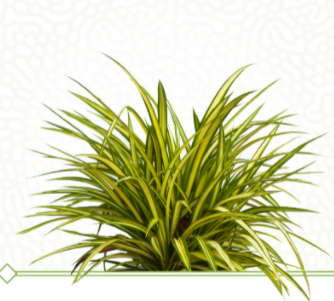
Spider plants love direct, bright sunlight and are able to thrive with less natural light. They thrive in areas that have the combination of fluorescent light or natural lighting. The spider plants often be found with browning leaves. It is due to exposure to fluoride present in water. The use of distilled or rain water will help prevent browning and help keep your plants looking fresh and green.
17. Staghorn Fern (Platycerium)
Staghorn Ferns are awe-inspiring plants that can be a bit sensitive to the living conditions it is in. Other names for the staghorn plant include the antelope ear and the elkhorn. The staghorn is the perfect choice for those who want a dimly lit plant that has a distinctive style.
They prefer light that is bright, indirect or filtered light. They don’t like direct sunlight. The plant is not able to survive artificial light, so it’s best to position it in a spot where you can get the most natural light, but not close to the sun’s radiations. Like many high-maintenance plants in this listing, this one prefers damp, but not excessively moist soil.
18. ZZ Plant (Zamioculcasi)
ZZ plant is among the most durable plants available and is virtually impossible to eliminate. The lush foliage and robust nature make it among the most desirable plants for those who is in dire need of green. The plant also features waxy leaves which give it a lovely sparkle. It’s a wonderful plant to keep if you’re looking to fill the empty space in your house or require an extra companion for your collection of houseplants.
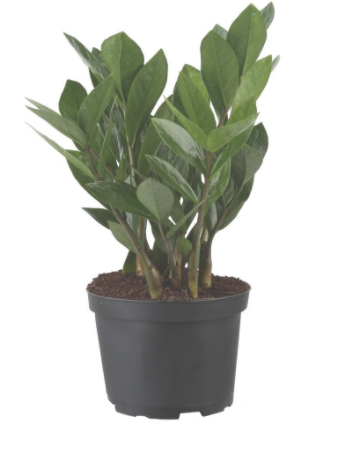
ZZ plant thrives in bright indirect light, however it can also thrive in dim light. It also can tolerate environments that have no natural light, and a small amount of fluorescent light sources. It doesn’t like bright light sources and can begin to show yellow curly leaves if it is exposed to too many light sources.
If you’re still unsure if your plant can survive, you can always test out different spots in your home to see how it reacts. If the leaves starts to have dark, brown or dried-out leaves, then your plant is getting too much sun and should be moved to a shadier area. If the leaves are small and pale while the plant seems to have stunted growth, its not getting enough sun and should be moved to a brighter area if possible. If you feel that your plant might need extra help, take a look at our guide to reviving a dying plant so you can quickly nurse your plant back to good health.